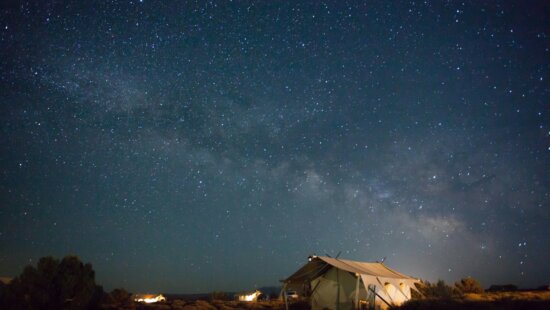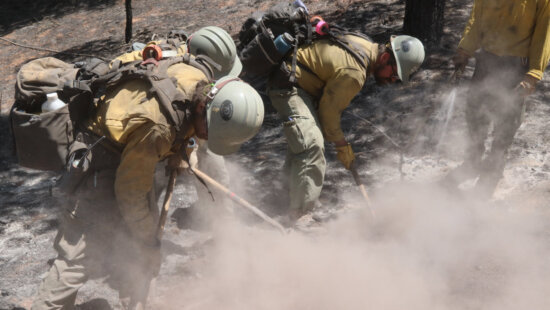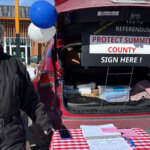Wildlife
Spring feelings and the bear-necessities
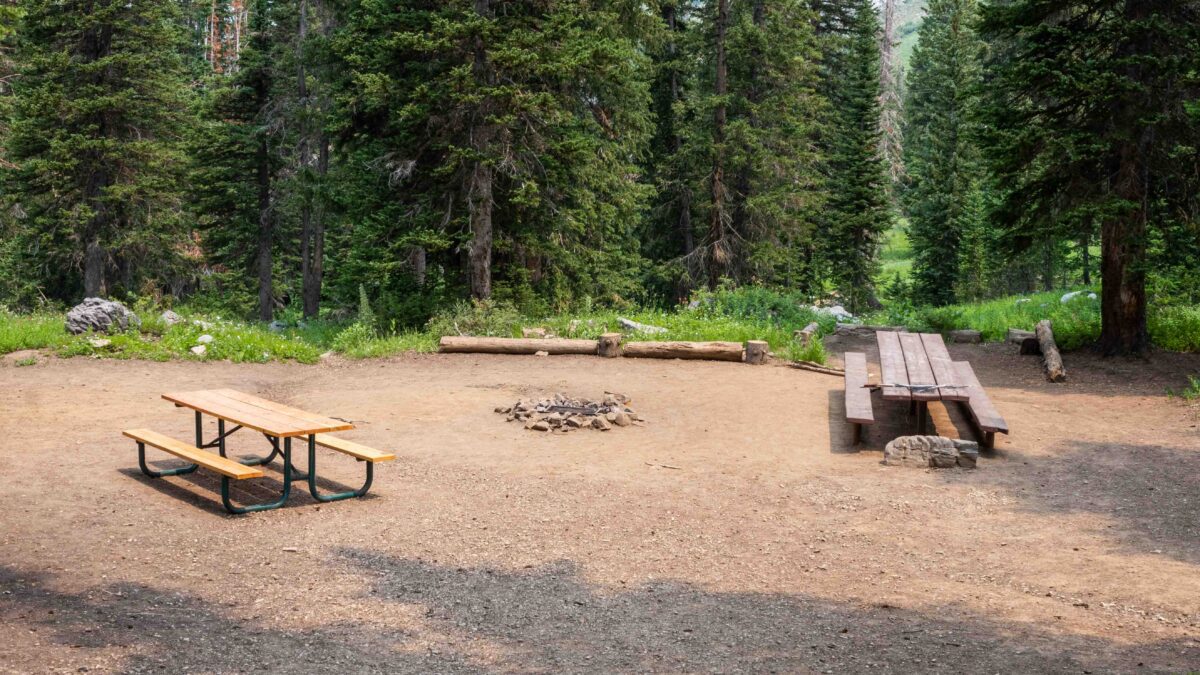
A campsite near Alta Ski Area in the Spring. Photo: TownLift // Kevin Cody.
PARK CITY, Utah — The weekend might have been filled with snow, rain, wind, and mud, but it was also some of the first signs of spring. Northern Utah had a taste of shorts-and-t-shirt weather for the first time this year.
Wildlife is also feeling the changing season; the first grizzly bear was spotted out of its den in Yellowstone last week. There might still be snow on the ground, but it’s not too early to consider being bear aware when planning big hiking and camping trips this spring. It’s essential to remember Utah is Bear Country.
Utah is home to black bears, whose population estimate varies but has generally been cited as around 3,000-4,000. According to a Utah Division of Wildlife Resources Black Bear Management Plan for 2023-2035, Utah’s population might be the smallest of all the western states based on hunting harvest rates. However, data collection over the past 20 years suggests a growing population.
Black bears are found in northern and southern parts of the state, with most between 7,000 and 10,000 feet, although they can be found in lower elevations.
Contrary to common thought, bears do not truly hibernate; they enter a state of torpor or a period of physical or mental inactivity. They are still awake but are not likely to venture out. UDWR Northeastern Region Assistant Wildlife Manager Randall Thacker said in episode 32 of the UDWR Wild podcast that black bears would not even leave their den to urinate or defecate as they develop a “fecal plug.” You read that right; over the five to seven months in their dens, they do not relieve themselves of waste.
Fun unpleasant visual facts aside, with the time change occurring, marking the point at which days become longer, bears will start to emerge from their dens. It’s not too early to ensure you have all your ducks in a row before heading out in search of peaceful times in nature.
Black bears are most active early in the morning and late in the evening, with those in areas frequented by humans leaning more into being nocturnal. Their diets consist mainly of berries, insects, flowering plants, nets, grasses, and other sources, with less than 10% of their diet from meat.
Many human-bear conflicts revolve around their sense of smell and preventable actions by humans. Everything from trash to scented items such as deodorant can lead a bear looking for food into a camping area. Simply storing anything with a scent away from a tent using the 100-yard triangle rule of them will suffice.
Using a bear-proof lock box where possible is ideal, but if not available, hanging the items at least 10 feet above and four feet away from tree trunks is a good idea. In some areas of the country, using a bear-resistant food container is mandatory in places like Yellowstone National Park. In Canyonlands National Park at Salt Creek, designated campsites and the Salt/Horse Zone must store all scented items from food to toothpaste in a hard-sided park-approved animal-resistant food container at least 100 feet from camp between March 15 and November 30. Soft-sided containers such as ursacks are not considered approved animal-resistant food containers.
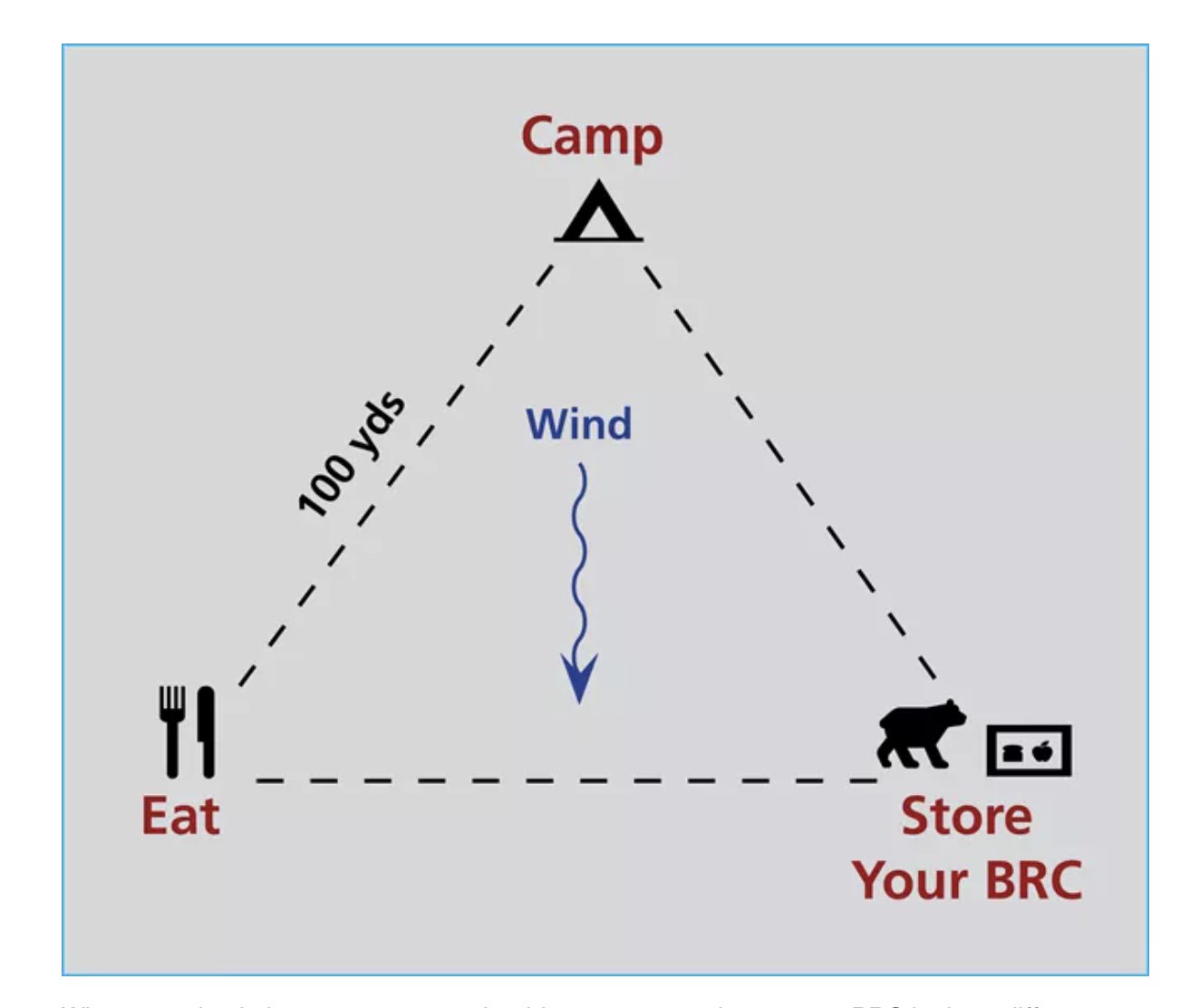
Black bear behavior should be thought of through the lens of Pavlov’s dogs. When bears become trained in the idea that campgrounds or people equal food, it’s the end of the line for them. Bears who learn to enter a camping area for food will likely be more aggressive and will not simply forget this knowledge. In most cases, it almost guarantees that the bear will have to be euthanized as a result. Not only will taking the few extra steps to keep yourself, but it can also save a bear’s life.
While hiking, simply going in a group and making noise on the trail can be an effective deterrent. Black bears are not looking for conflict and will likely avoid the area. Having bear spray on hand and ready is another good idea, as studies on bear encounters have shown it to be 92% successful in deterring an attack.
If encountered, however, black bears have their own set of best practices when trying to defuse the situation. Wild Aware Utah says to “stand your ground. Never back up, lie down, or play dead with a black bear. Make yourself look bigger by raising your arms and standing tall. Stay calm and give the bear a chance to leave. Be prepared to use bear spray or another deterrent.” They also cite that climbing a tree or attempting to run away are ineffective methods, as black bears can easily outclimb and outrun a human. When a black bear stands up, grunts, woofs, or makes other sounds, this is not necessarily them being aggressive; rather they are trying to smell or better look to determine what you are.
As with the recommendations by the National Park Service’s Instagram page, sacrificing a less-than-favorite friend to be bear food is not an effective counter to a bear encounter.
More information on bears in Utah and effective techniques to avoid conflict can be found on Wild Aware Utah, UDNR, National Park Service, US Fish and Wildlife Service, and US Forest Service websites.















